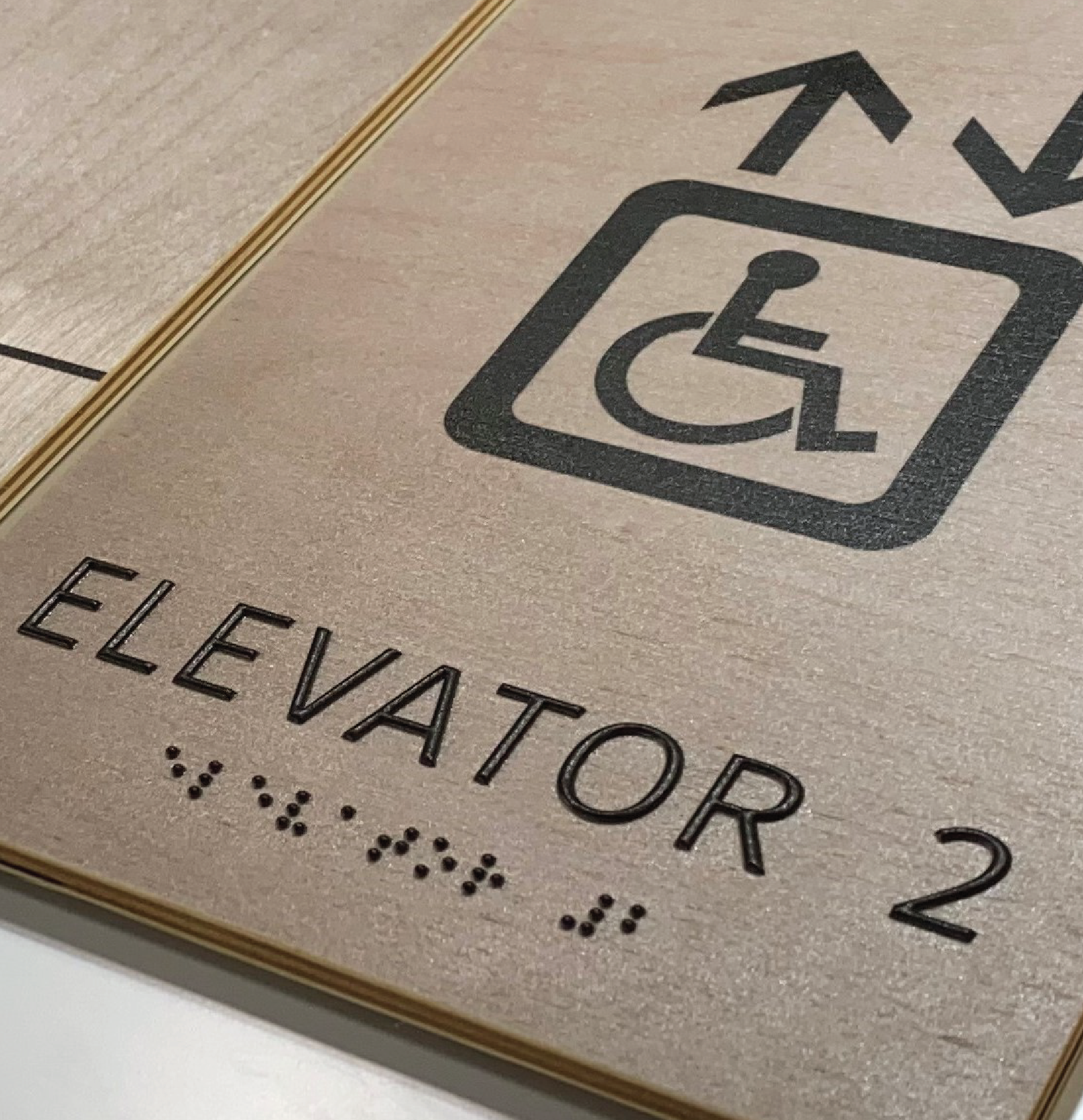The Role of ADA Signs in Adhering To Availability Specifications
ADA Signs: Guaranteeing Access and Compliance in Public Spaces
ADA signs plays an important role in assuring ease of access and conformity within public spaces, substantially contributing to an inclusive environment for individuals with handicaps. By adhering to ADA criteria, signage not only helps with navigating however likewise emphasizes an organization's devotion to diversity and equality. As we explore the subtleties of ADA signs, from tactile functions to develop details, it's important to take into consideration how these aspects integrate to promote the rights of all individuals. What are the usual pitfalls organizations deal with in preserving conformity, and exactly how can future fads in signs remain to drive ease of access ahead?
Significance of ADA Signage
In modern society, the importance of ADA signage prolongs beyond mere conformity with lawful requireds to personify a commitment to inclusivity and ease of access for all individuals. These signs are important in creating environments where people with disabilities can navigate public rooms with the very same simplicity and self-reliance as those without impairments. By offering standard and clear details, ADA signage guarantees that everyone can access centers, solutions, and info without barriers.
The importance of ADA signs hinges on its ability to improve the lifestyle for people with disabilities by advertising equal accessibility. It gets rid of the challenges that may otherwise prevent their capability to participate totally in community life. Additionally, these signs function as visible indications of a company's dedication to variety and equal rights, mirroring wider societal values that promote the legal rights and dignity of all people.
Additionally, ADA signs plays a vital function in public safety and security. By directing people to exits, bathrooms, and other essential facilities, it makes sure that all people, regardless of physical capacity, can evacuate securely throughout emergency situations. In recap, ADA signage is not simply a regulatory need yet a powerful device for cultivating a equitable and inclusive society.
Crucial Element of Compliance

Placement is vital; signs should be set up in places that are quickly visible and reachable. Commonly, signage should be placed in between 48 and 60 inches from the ground to make certain accessibility for both standing and mobility device customers. Responsive elements, such as Braille, are vital for individuals with visual impairments, giving vital details in a non-visual style.
High-contrast colors between the message and history are needed to improve readability for people with reduced vision. The ADA mandates certain contrast ratios to ensure quality. Furthermore, personality size is an essential consideration, with minimal height requirements determined by the seeing distance to make certain readability from numerous angles.
Style Considerations for Access
Creating accessible signage requires a thorough approach to ensure it fulfills the needs of all individuals, specifically his response those with disabilities. The size of the message is just as crucial, with ADA standards advising a minimum height based on seeing range to ensure legibility.
Contrasting colors in between message and history are important for exposure, particularly for individuals with aesthetic problems. A high comparison proportion helps distinguish the text from its background, boosting readability under numerous lights conditions. Additionally, tactile elements, such as Braille and increased personalities, are vital for individuals who are blind or have low vision. These elements should be located at a consistent height and setting to make sure simple access and comprehension.
In addition, the positioning of signs plays a substantial function in availability. Indications ought to be installed in locations that are easily reachable and unhampered. Ensuring that signs is placed at proper heights and angles enables all customers, consisting of those utilizing wheelchairs, to communicate with them effectively.
Usual Errors to Avoid

Another widespread mistake is the incorrect positioning of signage. ADA standards specify specific height and area requirements to make certain that indications are reachable and conveniently visible by all people, including those utilizing wheelchairs. Ignoring these standards not only interferes with ease of access yet additionally runs the risk of non-compliance with lawful standards.
In addition, insufficient contrast in between message and background is my sources a regular oversight. Adequate contrast is essential for readability, especially for people with reduced vision. Designers often pick colors that are visually attractive however do not have the necessary contrast, making the message tough to discern.
Last but not least, some designers fall short to incorporate tactile aspects, such as Braille, which are vital for individuals who are blind. Omitting these functions not just causes non-compliance with ADA laws but also restricts accessibility for a segment of the populace that counts on responsive details.
Future Trends in Signage
Developments in technology and enhancing understanding of inclusivity are shaping the future fads in signs style. Digital signage, for circumstances, is progressing to include interactive features and real-time updates, which can be critical in giving dynamic information in public rooms.
Another arising trend is the application of enhanced reality (AR) to improve user experience. AR-enabled signs can overlay digital info onto the physical atmosphere, providing aesthetically damaged individuals with auditory or haptic responses. ADA Signs. This innovation not just improves access however also produces an engaging experience for all individuals
Sustainability is additionally a significant variable influencing signage trends. Eco-friendly materials and energy-efficient lights solutions are being prioritized to straighten with global environmental objectives. Improvements in products science are leading to the advancement of even more durable and weather-resistant indications.
Final Thought
ADA signage plays a vital duty in guaranteeing accessibility and compliance within public areas by integrating tactile aspects, high-contrast colors, and strategic placement. The adherence to ADA requirements not only promotes safe navigating for great post to read people with impairments however additionally signifies an organization's dedication to diversity and inclusivity. By avoiding common mistakes and accepting future patterns, public areas can continue to advance these values, guaranteeing that the legal rights and dignity of all individuals are valued and upheld.
ADA signs plays an essential role in guaranteeing ease of access and compliance within public spaces, significantly contributing to a comprehensive setting for people with specials needs. As we check out the nuances of ADA signs, from responsive functions to create ins and outs, it's important to think about how these components integrate to support the rights of all customers.In modern society, the value of ADA signs extends past simple compliance with lawful mandates to symbolize a commitment to inclusivity and accessibility for all people. By offering clear and standardized info, ADA signs makes sure that everyone can access facilities, services, and details without barriers.
ADA signs plays an important duty in ensuring accessibility and conformity within public areas by incorporating tactile aspects, high-contrast shades, and tactical positioning. (ADA Signs)